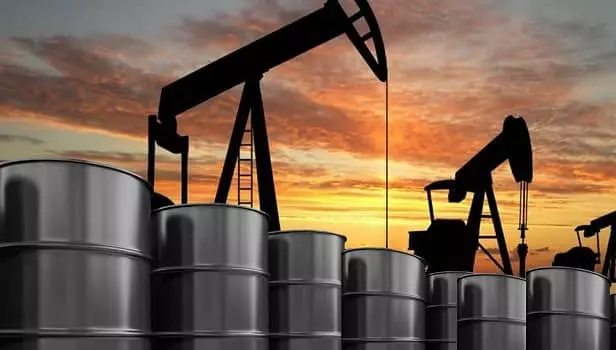Petroleum products are processed from crude oil as well as other liquids made from fossil fuels and are used by people for a variety of things. Biofuels are utilized similarly to petroleum products, most commonly in blends with gasoline and diesel.
For the entire yearly energy consumption of the United States, petroleum has traditionally been the largest main energy source. Petroleum-based products are used to power vehicles, heat buildings, and generate energy. Polymers, polyurethane, solvents, and countless more intermediate and finished commodities are produced by the petrochemical industry, which is a part of the industrial sector.
Crude oil is found naturally as a liquid petroleum substance made up of hydrocarbon resources and other organic elements that were created from the leftovers of ancient animals and plants. After being exposed to heat, pressure, and layers of sand, silt, and rock, these organisms finally evolved into a kind of fossil fuel that gets refined into useable goods like liquefied petroleum gases, gasoline, diesel, and feedstock primarily for the petrochemical industry.
Leading Crude Oil Producers in the World

On that note, let’s take a look at the top 10 Crude Oil producing nations below –
1. The United States
The United States acquires the first position on this list. In 2017, the US surpassed Saudi Arabia to take over as the world’s top oil producer. In 2019, production barely surpassed 17 million barrels per day, giving the United States an 18 percent share of worldwide supply. The shale fracking revolutions that occurred in the past ten years, which gave access to mineral reserves that were formerly not economically viable to exploit, have been the driving force behind the country’s progress. About 69% of the crude oil produced in the US in 2019 was produced in just five states. North Dakota, Texas, New Mexico, Oklahoma, and Colorado were among them.
2. Saudi Arabia
Saudi Arabia, which produced 11.8 million BPD of oil in 2019, or 12.4% of the world’s total, is ranked second on this list of the top oil-producing nations. The nation is the largest oil exporter in the world and the de facto head of the Opec alliance. In addition, it is host to the Ghawar oilfield, which is the largest conventional oilfield in the world and contributes significantly to Saudi Arabia’s production of crude oil. The government-owned Saudi Aramco, which in Dec 2019 offered 1.5% of its shares on the Tadawul stock exchange together in a world-record IPO, is in charge of managing the country’s oil fortune. Saudi Aramco is the most valuable listed corporation in the world.
Also see: How to Check Saudi Arabia Visa Status
3. Russia
In 2019, Russia produced little over 11.5 million BPD or over 12% of the world’s oil. The nation is the official leader of a coalition of Opec member nations known as Opec+ and, like Saudi Arabia, is a big oil exporter to international markets. The majority of its exports go to China as well as important European markets like Germany and the Netherlands. After a phase of privatization during the fall of the Soviet Union, a large portion of Russia’s oil (as well as gas) industry has since returned to state control and is now managed by businesses with government backing, such as Rosneft and Gazprom.
4. Canada
Approximately 97% of Canada’s oil is found in the oil sands of the western province of Alberta. Canada has the third-largest recognized oil reserves in the world, behind Saudi Arabia and Venezuela. The nation generated over 5.6 million BPD in 2019, accounting for about 6% of the world’s supply. Moreover, half of Canada’s crude oil production is accounted for by five businesses. Canadian Natural Resources, Suncor, Imperial Oil, Husky, and Cenovus are among them. Almost all of the nation’s exports, or about 3.7 million BPD in 2019, go to US markets. According to the EIA, the country’s 4.2 million barrels per day (b/d) of crude oil and condensate output in 2020 might rise to 6.9 million barrels per day by 2050, mostly due to the extraction of oil sands.
5. Iraq
Iraq ranked sixth among the top oil-producing nations in 2019 with an output of little under 4.8 million BPD. It is one of Opec’s original members. After Saudi Arabia, Iraq is the second-largest producer of crude oil in OPEC. With 145 billion barrels, it has the fifth-largest proven crude oil reserves in the world, accounting for 17% of Middle Eastern reserves and 8% of worldwide reserves. Despite having a large hydrocarbon resource, the nation’s oil infrastructure has recently been hindered by financial sanctions, military wars, and political unrest, making it less able to produce national profits through exports. Although the Kirkuk field is a significant producing region in the north of the country, the majority of the nation’s oil production occurs across enormous oilfields in the south, notably the Rumalia fields and Gharraf fields.
6. The United Arab Emirates (UAE)
The United Arab Emirates has gained prominence as a major oil exporter in recent years, reaching an output of almost four million barrels per day in 2019. A large portion of the UAE’s oil deposits are under the jurisdiction of the government-owned Abu Dhabi National Oil Company, but upstream operations sometimes involve partnerships with foreign, private-sector companies. Around 25% of the UAE’s gross domestic product is made up of oil exports, many of which go to Japan. The UAE has been a member country since 1967.
7. China
In 2019, China produced slightly more than 3.8 million BPD, approximately 4% of the total global output. Large, state-owned businesses, such as Sinopec, China National Petroleum Corporation, and China National Offshore Oil Corporation, dominate production in the nation. The nation imports a significant amount of its crude from abroad, primarily from Saudi Arabia and Russia, and is the 2nd largest consumer of crude oil in the world after the United States. As of 2016, China had proven oil reserves totaling 25,132,122,000 barrels, or around 1.5% of the total worldwide oil reserves, which stood at 1,650,585,140,000 barrels. China possesses proven reserves that are 5.4 times the amount of its yearly use. Accordingly, if imports were stopped, there would be enough oil for around 5 years (at current consumption rates and excluding unproven reserves).
8. Iran
With a national output of over 3.5 million BPD, Iran, an Opec founding member, supplied around 3.7% of the world’s oil in 2019. Despite controlling approximately 10% of the world’s known oil reserves, the country has been unable to fully exploit the market viability of its oil wealth due to severe economic sanctions placed in reaction to its nuclear weapons program. The state-owned Iranian Oil Company, which has its headquarters in the Iranian capital Tehran, is in charge of Iran’s enormous oil (and gas) reserves. As of 2016, Iran had proven oil reserves totaling 157,530,000,000 barrels, or about 9.5% of the total oil reserves in the globe, which stood at 1,650,585,140,000 barrels. There are confirmed reserves in Iran that are 239.2 times as much as their yearly use. Accordingly, at present consumption rates and eliminating proved reserves, there would be around 239 years of all the oil left without Net Exports.
9. Kuwait
Despite its modest size, Kuwait ranks among the top oil producers in the world, wedged between Saudi Arabia, Iraq, and the Persian Gulf. It produced little fewer than three million BPD in 2019, or about 3% of the entire world’s output. The enormous Burgan oilfield, one of the largest in the world, is located in the southeast of the nation and is managed by the government-owned Kuwait Oil Company. The Raudhatain fields and Sabriya fields are just two of the key oilfields in northern Kuwait.
10. Brazil
Brazil, the sole nation from Latin America on this list, produced about 2.9 million barrels per day in 2019, contributing about 3% of the world’s total output. Since the country’s exploration and production industry was freed from the state’s monopoly in 1995, its proven oil reserves and output rate have consistently expanded. The government-backed business Petrobras is still very engaged in Brazil’s domestic oil sector. Pre-salt deepwater operations in the Santos and Campos Basins, which are found in the South Atlantic Ocean south of Rio de Janeiro, account for the majority of Brazil’s oil output.
Conclusion
In subsurface reservoirs, crude oil is found naturally as a mixture of organic components and hydrocarbon deposits that is liquid at the moment. This unprocessed renewable resource is a crucial commodity that may be traded through derivatives contracts as well as the spot oil market. Crude oil is extracted from the Earth and refined to produce a variety of goods, including gasoline, jet fuel, and other petroleum products including kerosene, paraffin, petrochemical feedstocks, solvents, and lubricants.
Santosh Kumar, the author behind IndiasStuffs.com, is passionate about sharing valuable insights on a variety of topics, including lifestyle, technology, and Indian culture.
Page Contents

